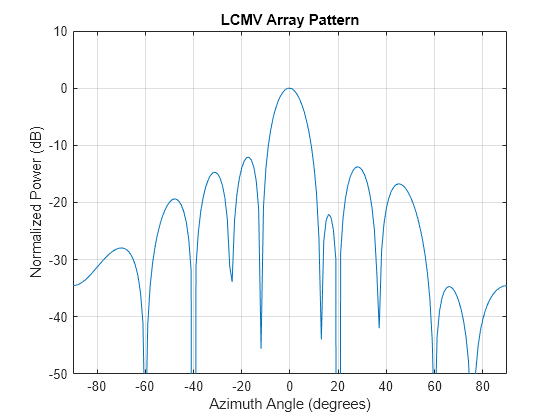lcmvweights
Narrowband linearly constrained minimum variance (LCMV) beamformer weights
Description
wt = lcmvweights(constr,resp,cov)wt, for a phased array. When applied
to the elements of the array, these weights steer the response of
the array toward a specific arrival direction or set of directions.
LCMV beamforming requires that the beamformer response to signals
from a direction of interest are passed with specified gain and phase
delay. However, power from interfering signals and noise from all
other directions is minimized. Additional constraints may be imposed
to specifically nullify output power coming from known directions.
The constraints are contained in the matrix, constr.
Each column of constr represents a separate constraint
vector. The desired response to each constraint is contained in the
response vector, resp. The argument cov is
the sensor spatial covariance matrix. All elements in the sensor array
are assumed to be isotropic.
Examples
Input Arguments
Output Arguments
More About
References
[1] Van Trees, H.L. Optimum Array Processing. New York, NY: Wiley-Interscience, 2002.
[2] Johnson, Don H. and D. Dudgeon. Array Signal Processing. Englewood Cliffs, NJ: Prentice Hall, 1993.
[3] Van Veen, B.D. and K. M. Buckley. “Beamforming: A versatile approach to spatial filtering”. IEEE ASSP Magazine, Vol. 5 No. 2 pp. 4–24.
Extended Capabilities
Version History
Introduced in R2013a
See Also
cbfweights | mvdrweights | sensorcov | steervec | phased.LCMVBeamformer
